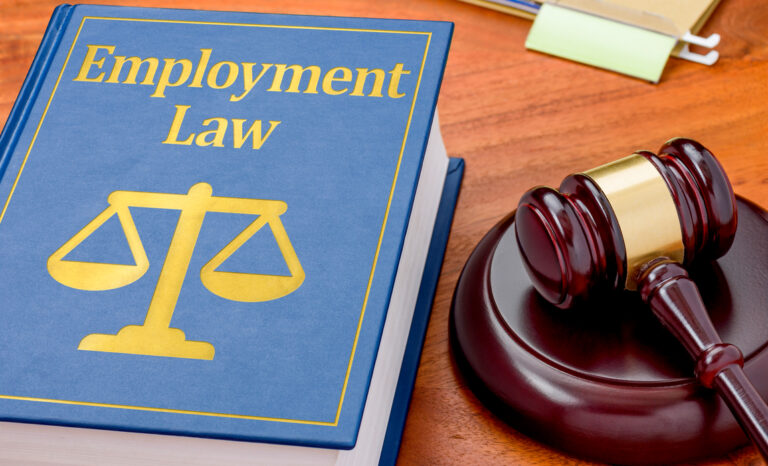Constructive Dismissal

Constructive dismissal is a comprehensive procedure that should be treated seriously. There are many aspects to it, and the employees who are planning to go through it should discover all the core factors before initiating the procedure. Both employees and employers facing a constructive dismissal claim in the UK have to be as aware about different aspects of the procedure as possible before taking any legal action.
What is a constructive dismissal?
A constructive dismissal is a legal procedure designed for situations, in which the employee is forced to resign. The main point of constructive dismissal is to protect employees from being treated unfairly and ensure they receive benefits and compensations related to the actual circumstances of their resignation.
Employees should keep in mind that this procedure is not applied to every possible scenario, and the result will strongly depend on the circumstances. It also should be noted that the employees will have to gather supporting evidence to prove they were treated unfairly and present it to the authorities.
What is the difference between constructive and unfair dismissal?
Constructive dismissal and unfair dismissal are frequently confused, but it is important to understand the difference between these two concepts. Constructive dismissal applies to a situation, in which the employee is forced to resign, whereas unfair dismissal is when an employee’s contract gets terminated without substantial reasons or against the terms of the contract itself.
These two procedures help achieve different objectives as well. Unfair dismissal may pursue the aim of saving the job or getting compensation for having the contract terminated unfairly. The main objective of a constructive dismissal is to get compensated and have the dismissal formalised correctly.
These two procedures are also processed differently by the employment tribunal. The parties involved have to collect and provide different kinds of evidence, follow different time frames, and file different types of claims, so it is crucial to understand these differences for both parties involved.
Examples of constructive dismissal
There are multiple situations that fall under the category of constructive dismissal:
- The first group of reasons behind the employee’s resignation relates to their salary. It might include the employee failing to pay the salary in time or at all, reducing the employee’s salary without a formal reason, or doing the same without proper notice.
- The second group of issues that might cause a constructive dismissal relate to the actual work process and the employee’s career. It includes unreasonable demotions, changes in shifts, and other related actions. It might even include assigning tasks that do not match the position of employee in some cases. For example, when an intern or a trainee takes on the responsibilities of regular employees and is not getting a promotion, even though they are performing the same tasks.
- The last group of situations that might fall under this category relate to the employer’s behaviour and workplace environment. In case the employee is forced to resign because of bullying, harassment, discrimination, or other forms of improper treatment, they might have good chances of successfully going through the constructive dismissal route. However, it is important to mention that in order for the case to be successful, the employee has to gather evidence of improper behaviour in advance.
How long do I need to be employed to make a claim for constructive dismissal?
The procedure comes with some eligibility requirements that work as safeguard mechanisms that protect the employers from getting wrongfully sued. One of them is the minimum term of employment that the person has to match in order for them to be eligible. There is no specific requirement, as most constructive dismissal cases in the United Kingdom are reviewed individually, but the general point of reference is at least two years of employment.
The employees should also keep in mind the timing for filing the claim, which is three months minus one day after the employment has been terminated. This time frame is designed for all the payments from the employer’s side to have been processed by the time the claim is made.
It also has to be mentioned that the process does not begin with the actual claim. Before the employment tribunal gets involved, the issue is reviewed by Acas, and the vast majority of cases are resolved by reaching an arrangement between the employee and the employer without taking it to the tribunal. This is important, as the timings for contacting Acas have to be taken into account when developing the course of action for making a constructive dismissal claim in the UK.
How to claim constructive dismissal?
The process of making a claim for constructive dismissal involves several steps, including:
- Gathering evidence of the employer’s conduct that led to the resignation. Of course, it depends on the specific circumstances, but to maximise the chances of being compensated fairly, the employees should be ready to collect and provide compelling evidence that proves their case falls under the constructive dismissal category.
- Notifying the employer in writing of the reasons for resigning. Having a copy of this notice will dramatically improve the chances of the employment tribunal deciding the case in favour of the employee.
- Seeking legal advice to determine if the circumstances meet the requirements for a constructive dismissal. Professional solicitors will guide the employees through the process, help them determine whether they are eligible to go through the constructive dismissal route, and help with the process of collecting evidence.
- Making a formal claim for constructive dismissal to an employment tribunal.
How to prove constructive dismissal?
As mentioned, in order for the case to be viewed in the favour of the employee, it is necessary for them to prepare all the corresponding evidence and demonstrate it to the employment tribunal. The first piece of evidence has also been described above, as it is the written notice with reasons for resignation.
All other pieces of evidence should be aimed at proving the reasons stated in this notice, and it is perhaps the trickiest part of filing a successful constructive dismissal claim. The evidence required for success is very dependent on the actual reason for resignation. For example, in case it relates to unfair salary deductions or the employer failing to pay salary on time, it would be reasonable to showcase bank statements proving it. In case it relates to unfair work distribution, the employee could use internal logs of their tasks as evidence.
It is always recommended to seek legal advice from experienced constructive dismissal lawyers, as they will guide the parties through the exact types of evidence that would be suitable for their specific situation. In cases of constructive dismissal, the best course of action is to start getting legal guidance as early as possible.
What is the amount of compensation payments in constructive dismissal?
The amount of compensation is very individual for every case of constructive dismissal. Most cases are not actually taken to the employment tribunal, as they are typically resolved with the help of Acas, and the most common resolution is a payment arrangement. The sum of such payment depends on the same factors that are considered by the employment tribunal, but the result is never the same, as the time and funds required to fully process the case are also taken into account.
The first group of factors that play a role in calculating the compensation are related to the employment itself. Depending on how long the employee has been working for the company, this compensation might vary dramatically. On top of the basic award, the employer commonly has to compensate for the potential losses caused to the employee by the resignation. This includes losses of wages at the company, losses of pensions and other benefits, and losses of potential future wages.
How can we help?
The team of Sterling Law is always ready to provide the employees with legal guidance. In case you feel you’re treated unfairly by your employer, feel free to contact us. Our solicitors have hundreds of successful constructive dismissal cases in their portfolios, and we always treat these cases with an individual approach, providing advice for your specific situation.
In case you are an employer facing a constructive dismissal claim, we are also ready to guide you through the process and help you arrange a fair deal with the employee filing the claim.
Our constructive dismissal solicitors will be happy to consult you in our office in London or provide legal advice online. Navigate the website to book a consultation, and we will reach out in no time.
















